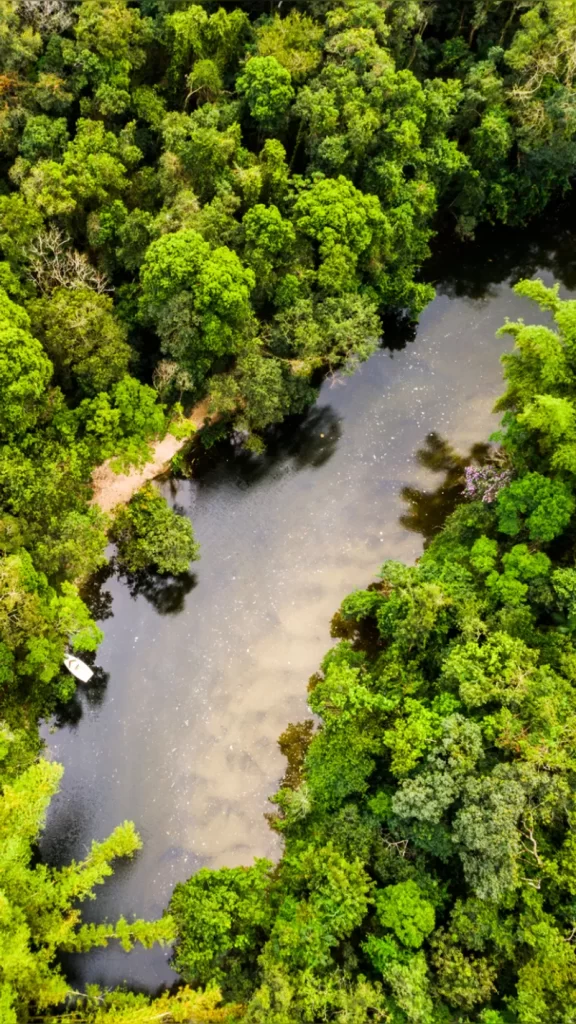Scheme could end up duplicating actions under current legal frameworks, warn activists.

Representational image of a forest. (Credit: depositphotos.com)
New Delhi: If you are keen on doing your bit for the environment and taking concrete action to combat climate change, a new programme could well address your needs.
Called a market-based mechanism required to promote LiFE – Lifestyle for the Environment – the Environment Ministry has introduced the ‘Green Credit Programme,’ which offers incentives to individuals, private companies, government bodies, Panchayati Raj Institutions (PRIs), and public sector units to take steps for ecological restoration and pollution reduction.
Entirely based on voluntary participation from all stakeholders, the Green Credit Programme provides actionable options spread across eight main sectors: planting trees, preventing water pollution, practicing sustainable agriculture, managing solid/municipal/industrial waste, reducing air pollution, carrying out mangrove conservation, manufacturing products with an eco-mark label, and engaging in sustainable infrastructure construction.
Entities such as urban local bodies, big residential townships or housing societies or even a University campuses will be eligible to carry out any of these eight activities and earn green credits. The Government will be forming a Steering Committee to work out the procedural details. These include how much green credit an individual or a company can earn, which can be traded later.
Launched by Prime Minister Narendra Modi at the Glasgow climate change negotiations meeting in November 2021, LiFE is promoted by the government of India as a movement “that aims to encourage sustainable lifestyles by driving consumer and community behavioural changes to incentivise environmentally friendly practices.”
According to a draft notification published on June 27, on the Green Credit Programme, the government claims that apart from incentivising individual and community behaviour, the programme will also encourage private sector industries, companies, and other entities “to meet their existing obligations stemming from other legal frameworks by taking actions that can converge with activities relevant for generating or buying Green Credits.”
Explaining the difference between Carbon Credits and Green Credits, Naresh Pal Gangwar, Additional Secretary of the Ministry of Environment, Forest, and Climate Change (MoEF&CC), told News9 Plus, “Carbon Credits deal with carbon removal or reduction, while Green Credits are for other environmental outcomes such as water conservation and waste management.”
“These Green Credits will assign value to environmental outcomes other than carbon dioxide removal or reduction,” he added.
The sectors identified by the draft notification include Green Credits via tree plantations (increasing green cover), water conservation (water harvesting, use efficiency/savings, including treatment and reuse of wastewater), sustainable agriculture (natural and regenerative agricultural practices, soil health, etc.), waste management (sustainable and improved practices for waste management), reducing air pollution (and other pollution abatement activities), conservation and restoration of mangroves, encouraging manufacturers to adopt eco-mark based labels, and promoting sustainable building and infrastructure using sustainable technologies and materials.
“In the beginning, Green Credits will be made available to individuals and entities engaged in selected activities and who undertake environmental interventions. These Green Credits will be available for trading on a domestic market platform,” the draft said.
The Environment Ministry has requested reactions and comments from experts and the public within 60 days of the draft’s publication.
Once all the inputs are received, Gangwar stated that there would be a definite timeframe to implement the Green Credit Programme, along with simultaneous efforts to create and increase the demand side as well.
Green Credits or Greenwashing?
The draft notification also mentions that activities under Green Credits can bring benefits for Carbon Credits.
“An environmental activity generating Green Credits may have climate co-benefits, such as the reduction or removal of carbon emissions. An activity generating Green Credits under the Green Credit Programme may also receive Carbon Credits from the same activity under the carbon market,” it said.
Striking a note of caution, Priyadarshini Karve, an urban sustainability expert based in Pune, said, “Carbon emissions are measurable, and there is a system in place. But there is no such mechanism in place for other green activities.”
The draft notification does mention a Technical Committee that will develop and make recommendations to the designated administrator for developing “methodologies for the allocation of one unit of Green Credit based on environmental action for each activity, ensuring fungibility and equivalence of Green Credits,” as well as a “mechanism for measurement, reporting, and verification process for each activity.”
Karve also terms the government’s approach, making individuals responsible for solving larger environmental problems as flawed. She adds, “This is an agenda pushed by private corporations to get rid of their liabilities.”
Moreover, Karve raised concerns about possible duplication in relation to existing legal frameworks such as the Environment Act and the Water Act.
She said, “This looks like another possible repackaging of the same actions that are supposed to be carried out under the existing legal framework.”
Compensatory Afforestation
Another clause in the draft mentions that all entities registered for Accredited Compensatory Afforestation under the earlier guidelines issued by the Environment Ministry must register with the Green Credit Registry under this Green Credit Programme. Accredited Compensatory Afforestation involves private entities growing forests that can be used for Compensatory Afforestation by parties needing forest land diversion.
“The Accredited Compensatory Afforestation will be eligible for consideration as Compensatory Afforestation for the diversion of forest land under these guidelines, subject to qualification and allocation of Green Credits under the Programme,” it stated.
Kanchi Kohli, a law and policy researcher, pointed out, “What this is attempting to do is to create an ancillary process to what the routine compensatory processes have been doing for the last several decades. Mechanisms such as accredited compensatory afforestation and green credits incentivise private individuals and institutional actors to create plantations that can be readily traded for compensatory afforestation. While this may help operationalise forest clearances, it runs the risk of compromising rights and ecologies unless these factors are considered in the design of green credit schemes.”
(This story first appeared on news9live.com on Jul 03, 2023 and can be read here.)



